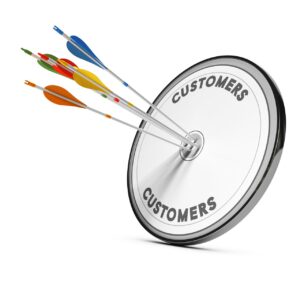Are you involved in field sales? Are you a sales representative, leader, or part of a sales team? We’ve got you covered.
Field sales is the art of selling products or services directly to clients in their environment. It’s a challenging yet rewarding profession that requires unique skills and a deep understanding of your product and customers.
Don’t worry, we’re here to help you navigate this dynamic landscape. Check out our comprehensive guide with 10 practical tips for succeeding in field sales.
Tip 1: Master Your Product Knowledge
Understanding your product or service deeply is crucial for successful field sales. It enables sales reps to confidently handle customer questions, showcase unique selling points, and position your product effectively against competitors.
Remember, knowledge is power, and in field sales, product knowledge is your superpower. But how can you become an expert? Here are some strategies for your field sales team.
Attend Product Training Sessions
Your company’s training sessions are a valuable source of info about your product or service. They offer insights into its features, benefits, and unique selling points.
Read Product Manuals
Product manuals offer detailed information about the product, including specifications, usage instructions, and maintenance tips. Reading the manual helps you understand your product better and its functionalities.
Engage with Customers
Your customers who are already using your product or service can offer invaluable insights. They share their experiences, usage patterns, and the benefits they get. This gives you a fresh perspective and deepens your understanding of the product’s value.
Research Competitors
Understanding your product’s competitors is vital. Research their offerings, features, and benefits. Learn to position your product effectively against them. This will improve your selling skills and knowledge.
Tip 2: Develop a Robust Sales Process
A well-structured sales process is your compass in the field sales journey. It streamlines your workflow, ensuring no opportunities fall through the cracks.
From prospecting to closing deals, each step in your sales process should have clear objectives. This systematic approach maximizes your efficiency and conversion rates.
- Prospecting: This is how you find potential customers. It involves researching the market, identifying potential leads, and qualifying them based on their likelihood to purchase.
- Initial Contact: Connect with potential customers via phone, email, or in person.
- Needs Assessment: Ask questions to understand their needs, challenges, and goals.
- Handling Objections: Address any concerns or objections to reassure the customer.
- Closing: If the customer is happy with your product and objections handling, the final step is to seal the deal. This means finalizing the sale terms and processing the transaction.
Tip 3: Set SMART Sales Goals
Goal setting is a fundamental aspect of achieving success in field sales. It helps you stay focused and motivated. Aligning your sales goals with your clients’ objectives fosters stronger partnerships and positions you as a valuable asset to their business.
Regularly reviewing and adjusting your goals keeps you on track to meet and exceed targets. But how can you set SMART sales goals? Here’s a step-by-step guide.
Specific
When setting goals, clarity is key. Instead of vaguely wanting to “sell more,” let’s sharpen that focus. How about aiming to “boost my sales by 20%“?
Now, that’s a goal with a clear destination. It’s like entering a specific address in your GPS instead of just heading north. With a clear goal, you know exactly where you’re going.
Measurable
What gets measured, gets managed. If you aim to boost sales by 20%, tracking your sales numbers becomes your roadmap. It helps you see if you’re on the right track or need to adjust your route. Measuring your progress keeps you accountable and motivated.
Achievable
Set goals that challenge and excite you, yet remain attainable. Find that sweet spot between ambition and achievability. With the right resources and skills, you can aim high while staying grounded.
Relevant
Your goal should resonate with your role and align with your company’s objectives. If your company is aiming to increase market share, your sales goal could be to acquire new customers. This alignment creates a powerful synergy that drives you and your company forward.
Time-Bound
Every goal needs a timeline. A deadline creates a sense of urgency, a call to action. It’s the ticking clock that keeps you moving forward, pushing you to act now, not later.
Tip 4: Personalize Your Communication
Field sales provides a unique opportunity for face-to-face interactions with customers. Active listening and understanding customers’ needs enable you to tailor your approach and offerings to address their pain points effectively.
Remembering key details about your customers and following up promptly demonstrate your sales team’s commitment to their success.
Active Listening: The Art of Truly Hearing
When connecting with customers, remember that listening is an art. It’s more than just hearing words; it’s understanding the emotions, needs, and desires behind them.
So, listen attentively, show genuine interest, and let your customers know their words matter.
Understanding Needs: The Key to Tailored Solutions
Each customer is unique, with their own needs, challenges, and goals. By asking insightful questions, you can gather valuable information to customize your sales pitch and offerings.
Remember Key Details: The Secret to Personalized Communication
Remembering key details about your customers can make them feel valued and understood. Just like remembering a friend’s birthday or a colleague’s favorite coffee, small gestures can make a big impact.
Prompt Follow-Up: The Mark of a Committed Partner
Sending a quick follow-up after a meeting or conversation shows your commitment to your customer’s success. It’s like sending a thank-you note after a dinner party – a sign of respect and appreciation.
Show Empathy: The Path to Emotional Connection
Empathy is more than just understanding your customers’ challenges. Understanding their pain, sharing their hopes, and standing by their side. It’s a powerful tool for building emotional connections and making customers feel seen and understood.
Personalize Your Solutions: The Recipe for Customer Satisfaction
Generic solutions are like one-size-fits-all clothes. They might fit, but they rarely flatter. By personalizing your solutions, you can ensure they perfectly fit each customer’s needs and circumstances. It’s the key to happy customers and successful sales.
Tip 5: Master the Art of Sales Presentations and Storytelling
Becoming skilled in sales presentations and storytelling is a game-changer in field sales. Compelling presentations that showcase the benefits of your product or service captivate your audience and make a lasting impact.
Weaving storytelling into your sales team’s presentations humanizes your brand and connects emotionally with customers, making your message more memorable.
But how can you master the art of sales presentations and storytelling? Here are a few tips.
- Focus on Benefits, Not Features: Instead of just listing product features, emphasize how they benefit the customer. Show how your product solves their problems or improves their situation.
- Tell a Story: Engage your audience and make your message memorable by incorporating a story into your presentation. It could be a success story from a previous customer or an illustration of how your product works.
- Use Visuals: Visuals can help your audience understand and remember your message. Use images, diagrams, or videos to illustrate your points.
- Practice: Like any skill, the art of sales presentations and storytelling improves with practice. Rehearse your presentation, get feedback, and refine your approach.
- Engage Your Audience: Make your presentation interactive. Ask questions, encourage participation, and create a dialogue. This makes it more engaging and memorable.
- Use Analogies and Metaphors: Analogies and metaphors help understand complex ideas. They make your message relatable and memorable.
- Keep It Simple: Avoid jargon and complex language. Keep your message clear. If your audience can’t understand, they won’t remember.
- Show Passion and Enthusiasm: Your enthusiasm is contagious. If you’re passionate, your audience will be interested.
Tip 6: Handle Objections with Finesse
How do you handle objections? Instead of viewing objections as roadblocks, see them as opportunities to provide further value and address concerns.
By actively listening to objections and offering relevant solutions, sales reps build trust with customers and showcase their expertise.
Handling difficult situations with finesse demonstrates your professionalism and can turn challenging prospects into loyal customers.
Listen and Understand: The Power of Patience
When a customer raises an objection, pause and listen instead of immediately countering it. To understand their concern without interrupting or getting defensive? This approach can open doors to deeper understanding and stronger connections.
Empathize: The Bridge to Trust
Empathy is more than just understanding your customers’ concerns. It’s about validating those concerns and making your customers feel heard. It’s a bridge that can turn a tense situation into a moment of connection.
Address the Objection: The Art of Reassurance
Addressing an objection isn’t just about providing a response. It’s about providing clear, honest reassurance without any doubt. Use your product knowledge and sales skills to turn concerns into solutions.
Confirm Resolution: The Key to Moving Forward
After handling an objection, confirm that it’s resolved. This ensures you and your customer are on the same page and ready to move forward. It’s like tying a knot to prevent unravelling.
Anticipate Objections: The Shield of Preparedness
Imagine walking into a sales conversation armed with responses to potential objections. Being prepared like this boosts your confidence and helps you respond effectively when objections arise. It’s like having a shield in battle, deflecting any arrows that come your way.
Turn Objections into Opportunities: The Alchemy of Sales
What if you could turn lead into gold? In sales, you can do just that by turning objections into opportunities. Each objection is a chance to deepen your customer’s understanding of your product or service and to reinforce its benefits. It’s the alchemy of sales, transforming challenges into victories.
Tip 7: Optimize Time and Territory Management
As a field sales rep, your time is valuable, and territory management is crucial for optimizing productivity. Strategically plan your sales visits and prioritize high-potential prospects.
Leverage tools and technologies that enable efficient route planning and tracking, reducing travel time and expenses.
- Plan Your Visits: Instead of randomly visiting customers, plan your visits strategically. Prioritize high-potential prospects and plan your route to minimize travel time.
- Use Technology: Many tools and technologies can help manage your time and territory. For example, route planning software helps plan your visits efficiently, and CRM systems assist in tracking customer interactions.
- Stay Flexible: While planning is vital, be ready to adapt based on new opportunities or market changes.
- Group Customers by Location: Try to group customers based on their geographical location. This way, you can visit multiple customers in the same area, reducing travel time.
- Prioritize Tasks: Not all tasks are created equal. Prioritize tasks based on importance and urgency. This helps you focus on what truly matters and avoid wasting time on less important tasks.
- Delegate When Possible: If you have a team, delegate tasks when possible. This can free up your time to focus on strategic tasks and high-priority customers.

Tip 8: Embrace Technology and Sales Tools
Customer relationship management (CRM) systems help you organize customer data, track interactions, and identify upselling opportunities. Sales automation tools streamline administrative tasks, allowing you to focus more on building relationships with customers.
But how can you leverage technology for field sales success? Here are a few strategies.
Harness the Power of CRM Systems
Imagine having a personal assistant who keeps track of all your customer interactions, organizes customer data, and identifies opportunities for upselling or cross-selling. That’s what a CRM system can do for you. It’s like a command center for your customer relationships, helping you manage them more effectively.
Automate to Elevate Your Sales Game
Sales automation tools are like your personal productivity boosters. They can take care of repetitive administrative tasks, such as sending follow-up emails or updating customer records, freeing up your time to focus on what you do best: selling.
Stay Connected, Stay Ahead
In the fast-paced world of field sales, staying connected is a necessity. With mobile devices and apps, you can access customer data, send emails, and update your CRM system from anywhere. It’s like having your office in your pocket.
Embrace Social Selling: The New Frontier in Sales
Social selling is like networking on steroids. Social media platforms like LinkedIn, Twitter, and Facebook can boost your prospecting, relationship-building, and product promotion. They allow you to engage with your audience, share valuable content, and showcase your expertise globally.
Unlock Insights with Data Analytics
Data analytics tools are like a crystal ball. Data analytics provides valuable insights into your sales, customer behavior, and market trends, enabling informed decisions, sales strategy optimization, and predicting future trends.
Tip 9: Stay Motivated and Resilient
Field sales can be demanding, with its share of ups and downs. Staying motivated and resilient is vital for long-term success. Allocate time for self-improvement, attend sales training programs, and seek mentorship from experienced colleagues.
Celebrate your successes, no matter how small, and learn from setbacks to continually grow as a field sales professional.
Invest in Yourself: The Power of Self-Improvement
Imagine improving a little every day. Set aside time for self-improvement and see the difference. Reading books, attending seminars, or taking online courses all contribute to becoming a better sales rep. Are you ready to invest in yourself and unlock your full potential?
Seek Mentorship: The Guiding Light
A mentor can be your guiding light, helping you navigate the challenging world of field sales. Whether it’s a senior sales rep, a sales manager, or an industry expert, a mentor provides valuable advice, shares experiences, and inspires you to reach new heights.
Celebrate Successes: The Fuel of Motivation
Every success, no matter how small, is a cause for celebration. It’s a testament to your hard work, determination, and skills. Celebrating your successes can boost your morale, fuel your motivation, and propel you towards bigger victories.
Learn from Setbacks: The Seeds of Growth
Setbacks are not roadblocks; they’re stepping stones. Setbacks are chances to learn, grow, and become stronger. So, don’t get discouraged by setbacks. Instead, embrace them, learn from them, and use that knowledge to improve. Remember, every setback is a seed of growth.
Maintain a Positive Mindset: The Beacon of Resilience
Your mindset is like a beacon. A positive mindset can be your guiding light in tough times and lead you to success. It influences your motivation and resilience, keeping you strong and focused when things don’t go as planned.
Set Realistic Expectations: The Balance of Ambition
Ambition is a powerful motivator, but balance it with realism. Unrealistic expectations can lead to disappointment and demotivation. Be ambitious yet realistic in your goals, setting challenges that are achievable, and guiding your journey to success.
Stay Healthy: The Foundation of Resilience
Your physical health is the foundation of mental resilience. A healthy body boosts energy, focus, and resilience. Eat well, exercise, and get enough rest. Remember, your health is your wealth.
Build a Support Network: The Power of Unity
You’re not alone in your journey. Surround yourself with supportive and encouraging people. Whether it’s colleagues, friends, or family, a strong support network helps you stay strong during tough times. Remember, unity is power.
Tip 10: Build Meaningful Connections
Are you connecting with your customers on a deeper level? In field sales, it’s not just about selling products; it’s about building strong connections with customers and becoming a trusted partner in their journey to success.
Stronger relationships lead to greater success in your field sales endeavors. But how can you build meaningful connections? Here are a few tips:
- Show Genuine Interest: Show genuine interest in your customers. Ask about their business, challenges, and goals. Show you care about their success, not just the sale.
- Provide Value: Provide value beyond the sale. Offer advice, information, or support. The more value you provide, the stronger your relationship will be.
- Be Reliable: Be reliable and consistent. Follow through on your promises, and be there when your customers need you.
- Communicate Regularly: Regular communication keeps you top of mind and shows customers that you’re invested in the relationship. Whether it’s a quick check-in call, an email update, or a regular newsletter, keep the lines of communication open.
- Understand Their Industry: Take the time to understand your customers’ industry. This shows that you’re not just interested in selling your product, but also in understanding their world.
- Respect Their Time: Show respect for your customers’ time. Be punctual for meetings, keep your communications concise, and respond to their queries promptly.
- Show Appreciation: A simple thank you can go a long way in building strong relationships. Show appreciation for their business and their time.
- Be Transparent: Honesty and transparency build trust. Be honest about your products, services, and pricing. If you make a mistake, acknowledge it and make it right.
- Offer Personalized Solutions: Show customers that you see and value their unique needs by offering personalized solutions. This demonstrates your commitment to their success.
- Build a Personal Connection: Find common ground and build a personal connection. This could be shared interests, experiences, or values. People do business with people they like, so show your human side.
Final Thoughts | Your Shortcut to Field Sales Success
In the dynamic world of field sales, every day brings new opportunities to grow and succeed. With the right strategies, a positive mindset, and a drive for success, you can conquer any obstacle and achieve your goals.
Remember, success in field sales is about building connections, providing value, and becoming a trusted partner to your customers.
Master the art of field sales and create a lasting impact. Are you ready to embrace these 10 essential tips and boost your business strategy? The journey to field sales success starts now.
Let’s seize the day and step into success. The world of field sales is waiting. Are you ready? Book your free demo with Beest.app today!






